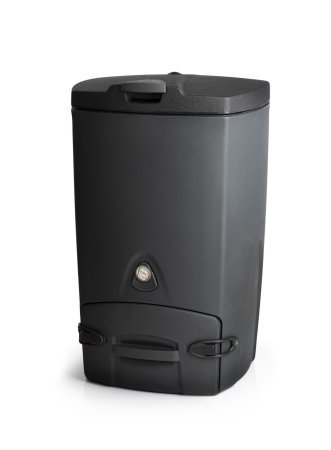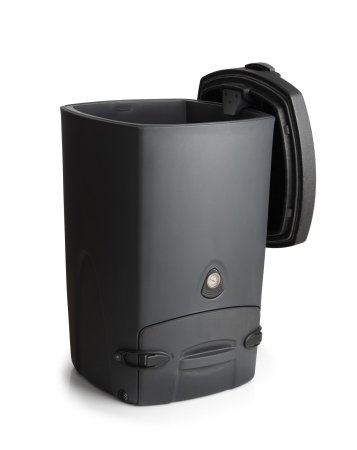Choosing correct composter location
Place the Biowaste Composter in a place where you can easily take your waste and unload the composter all year round. Set the composter up on a firm surface at a location with good drainage. Make sure that the composter is level.
The Biowaste Composter includes a seep liquid opening in the bottom left-hand side to drain any excess liquid. Place the composter directly onto the ground so that the soil will absorb any seep liquid. Alternatively, you can collect the seep liquid. If the compost mass is unusually wet, seep liquid may also seep from under the unloading door and from the inlet air valve at the front of the composter.
Before use
Place the liquid separation plate in the recess located in the bottom of the composter (the seep liquid drain). The purpose of the liquid separation plate is to separate any excess liquid from the compost mass. The plate can be detached and cleaned if necessary.
The Biowaste Composter has a seep liquid opening in the bottom left-hand side to allow any excess liquid to drain from the composter and be absorbed into the ground. You can collect the seep liquid in a container if you like, but this is not mandatory. Remove the rodent shield from the seep liquid opening in the bottom edge of the composter with a screwdriver, for example. Connect a liquid hose, diameter 32 mm, to the seep liquid opening in the bottom edge of the composter. Place the other end of the hose in a container located in such a place that the liquid will flow downhill.
Place a layer of five centimetres (5 cm) of Biolan Bulking Material in the bottom of the composter. Start using the composter. When you are putting waste into the composter for the first time, use more bulking material than recommended – you can reduce the amount later on.






